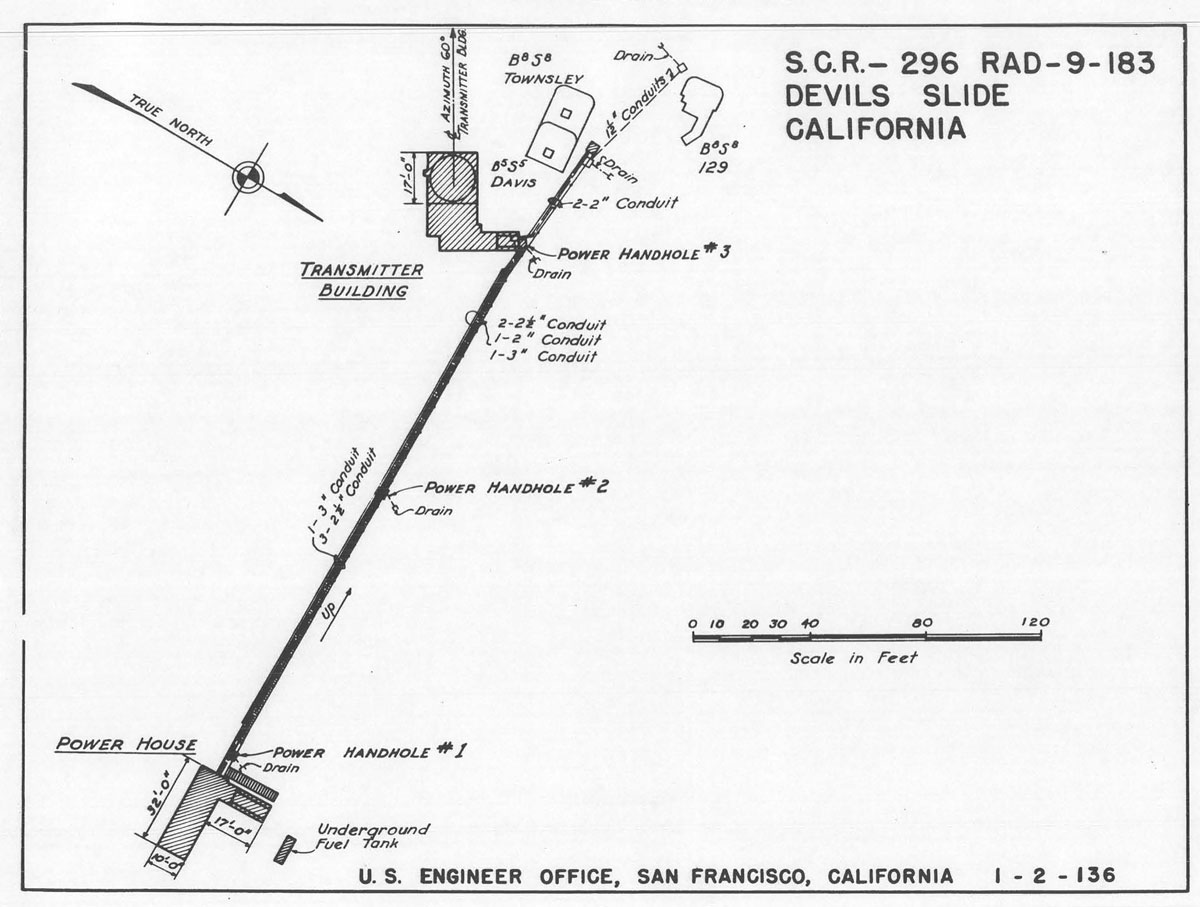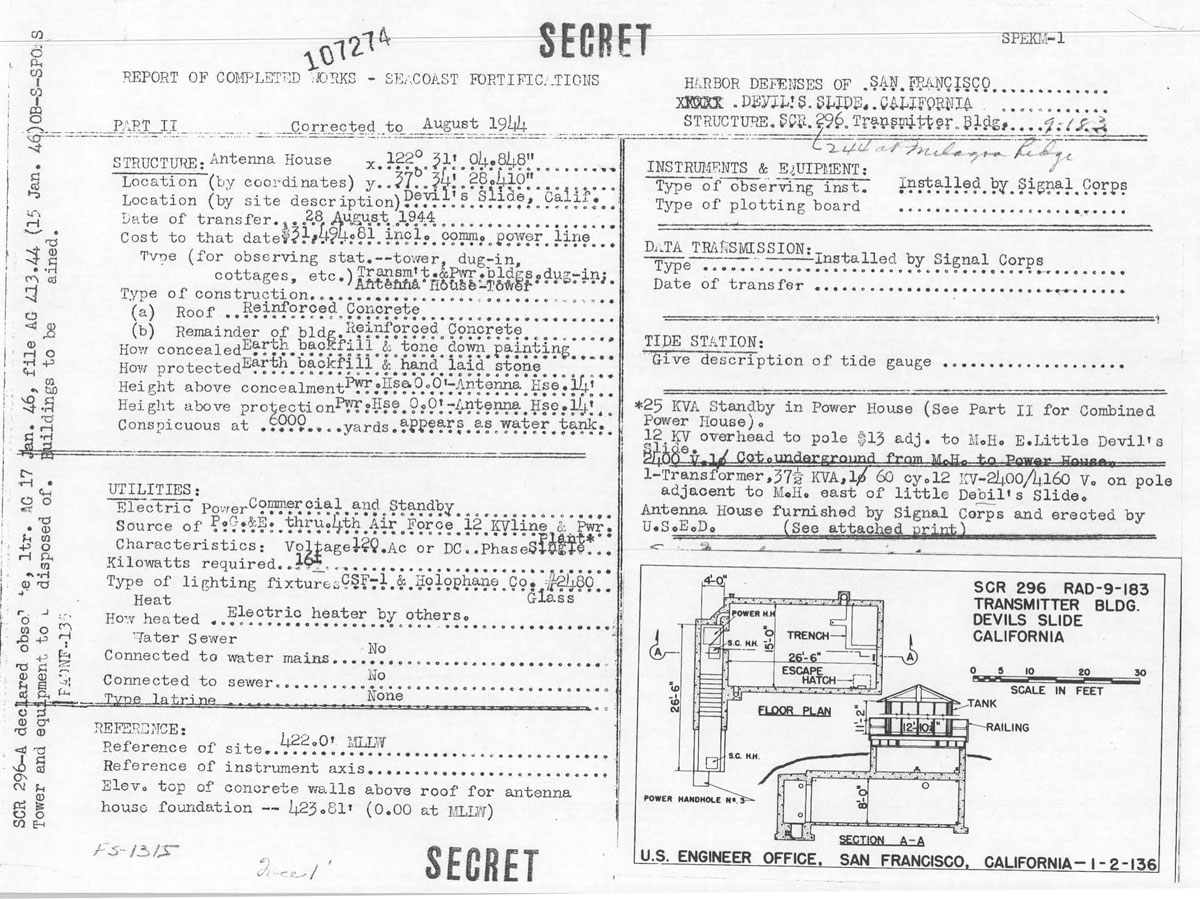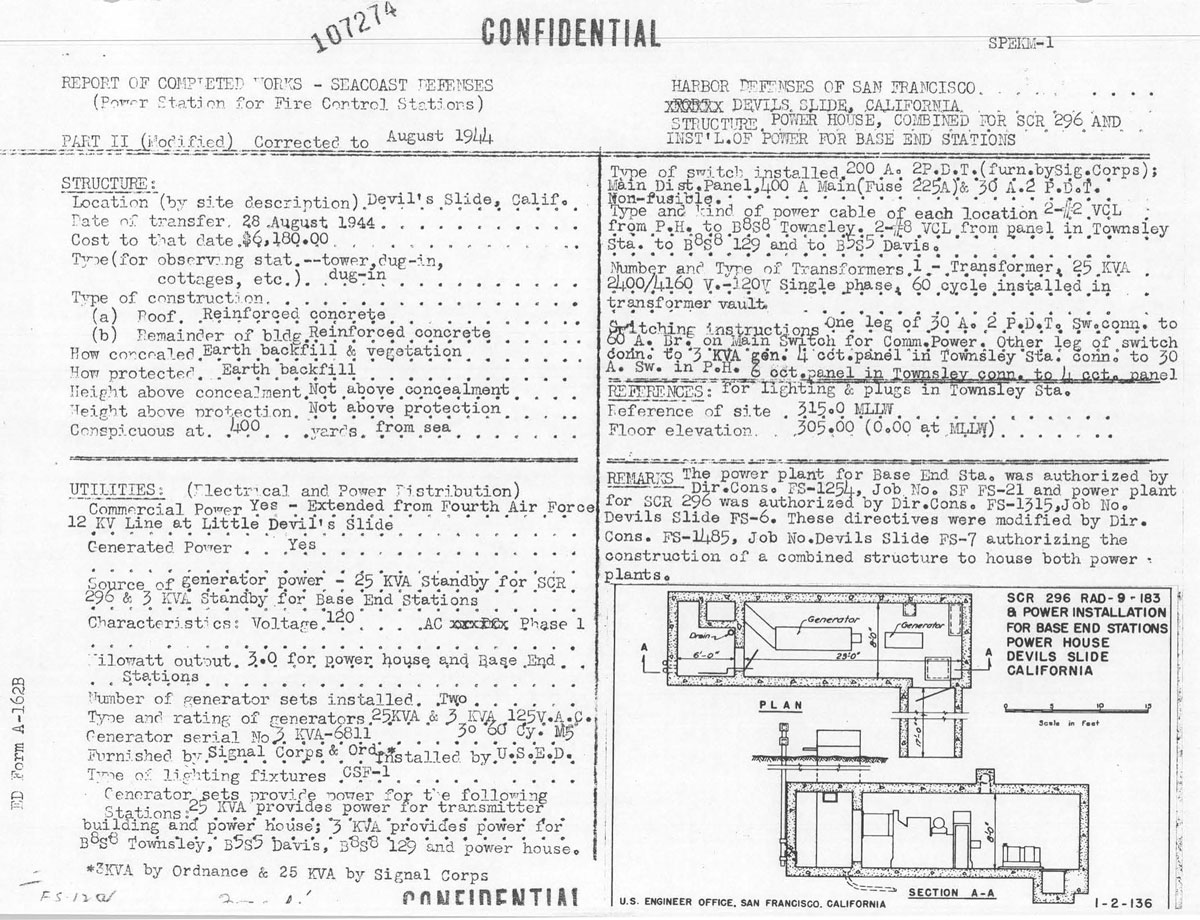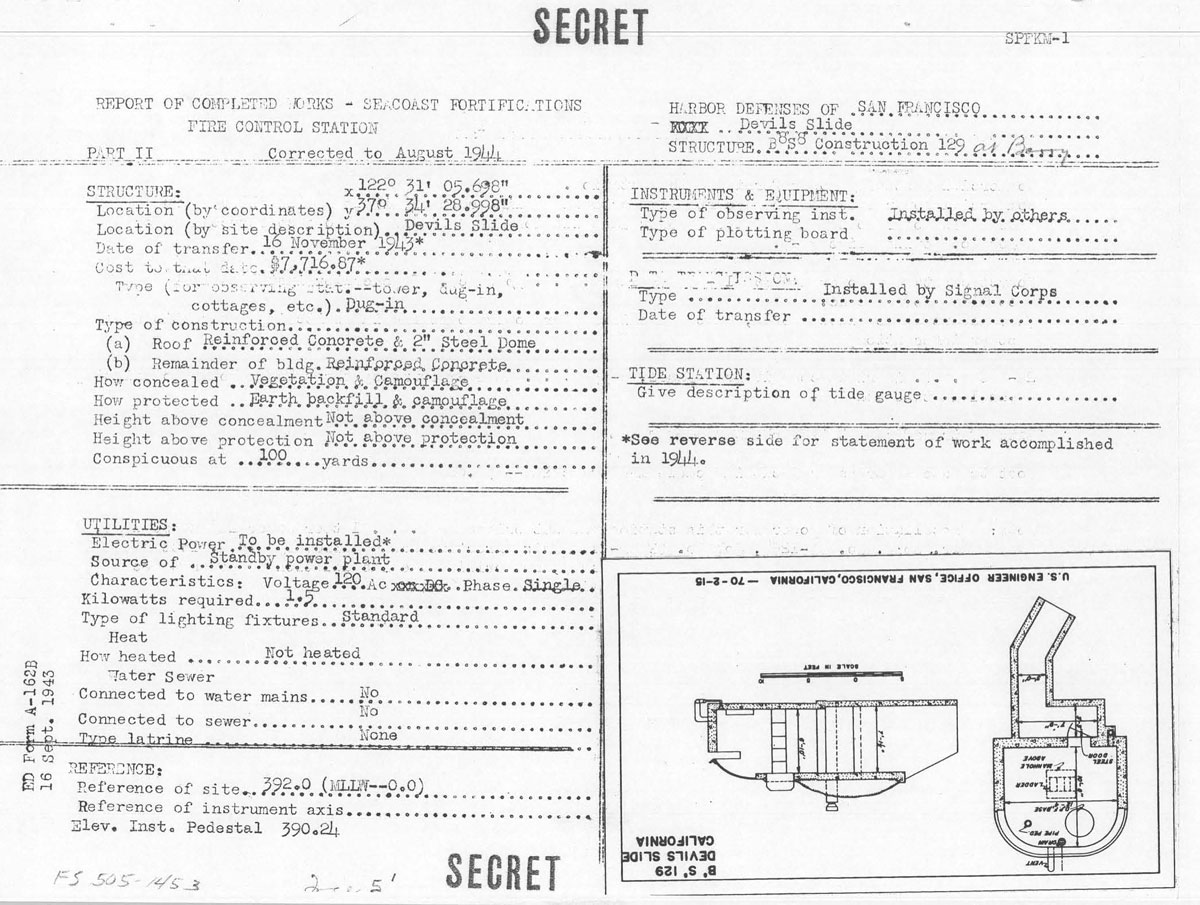




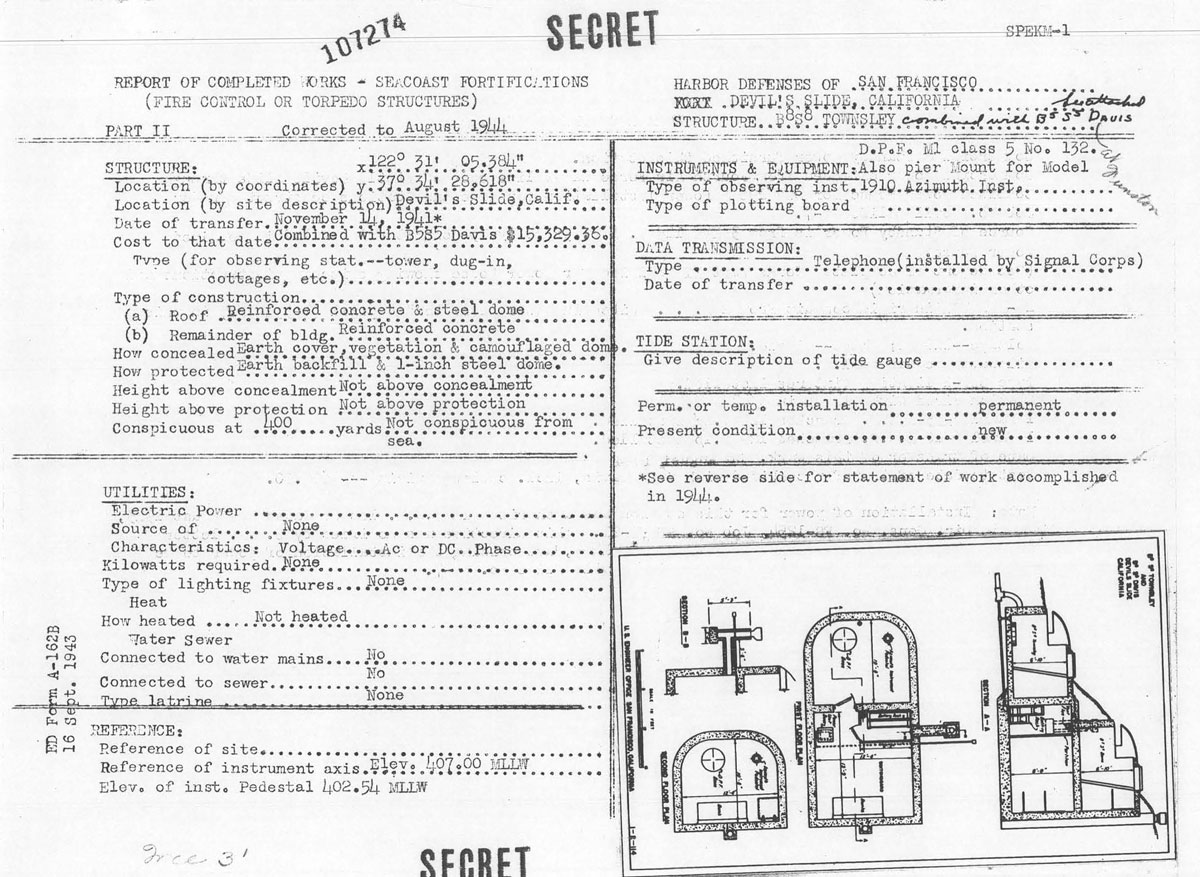
History
The 9.61 fee acre reservation was located near San Mateo County's Half Moon Bay. It served as a fire control station for Batteries Townsley (Fort Cronkite), Richmond P. Davis (Fort Funston) and 129 (Fort Barry).
Devil's Slide was a part of the Harbor Defense of San Francisco. It was one in a chain of fire control stations that provided fire control data to the firing batteries along the coast. From these stations (also known as Base End Stations) , soldiers viewed ships and triangulated the distance, speed, and direction of these ships in coordination with different stations. These stations were mostly important for artillery units stationed on the coast to attack any invasion. They gained particular importance during World War II immediately after the bombing of Pearl Harbor when many in California feared San Francisco or Los Angeles would be the next target. With the advent of radar and its widespread use, these stations became obsolete.
Construction began in 1943, and included three concrete observation posts, fortified command and support bunkers.The site was also equipped with an SCR-296 radar (Set 10) later in the War. This radar provided fire control data to Battery 244 located on Milagra Ridge Military Reservation.
On 25 October 1959, the reservation was transferred to the Navy who in turn disposed of it in 1983.
Updated 14 October 2014
Reports of Completed Works - Seacoast Fortifications
Fire Control Station for Battery Construction 129 (Fort Barry)






| Description: | Fixed Coast Artillery gun-laying medium wave radar, assigned to modern 6 inch or larger batteries. |
| Uses: | Set is designed to track a surface target in range and azimuth. Data are sent to the plotting room and used in firing. An SCR-296-A normally is assigned to one battery, but may furnish data to more. Works with IFF RC-136-A. |
| Performance & Sitting: | Range is shown on "A" scope. The target is tracked in azimuth with a pip matching oscilloscope or a zero-center meter. Range accuracy is about ± 30 yards while azimuth accuracy is about ± 0.20 degree under the best conditions. The set has a dependable range of 20,000 yards on a destroyer size target when employed at a height of 145 feet. Site should be not less than 100 feet above sea level; 150 to 500 feet is recommended. |
| Mobility: |
|
| Installation: | SCR-296-A includes a tower, an operating building, and two power plant buildings. The tower is obtainable in heights of 25, 50, 75, and 100 feet. Concrete floors must be put in locally. |
| Personnel: | Operating crew consists of 5 men in addition to a power plant operator and maintenance man who should be available at all times. |
| Power: | Primary power of 2.3 KW is supplied by PE-84C -- commercial or auxiliary 110 V, AC single phase. Generator needs high octane gasoline. |
|
Information from Naval History Library Online. |
For more information on the SCR-296 radar set CLICK HERE
